I was astonished to learn of a great treasure that can be found right here on American soil in an attractive but quiet and unassuming building at Wheaton College in Wheaton, Illinois. My wife and I visited the place on July 7, 2023–the annual Star Festival of Tanabata in Japan.
The Marion E. Wade Center is chiefly a research facility dedicated to the work of seven writers and thinkers: J. R. R. Tolkien, C. S. Lewis, G. K. Chesterton, Dorothy L. Sayers, Charles Williams, Owen Barfield, and George MacDonald–as well as Lewis’s wife, the poet Joy Davidman. It houses at least one copy of every book written by these authors as well as reams upon reams of their correspondence, much of which was written to and about one another. The center reportedly offers the world’s most comprehensive collection of Sayers’s work. Scholars and enthusiasts from around the world come and have access to these materials in the Reading Room. There are also relevant pieces of furniture, artwork, 3-D models, photographs, and many other artifacts. I would never have expected to find such items outside of England, let alone a day’s drive from home.
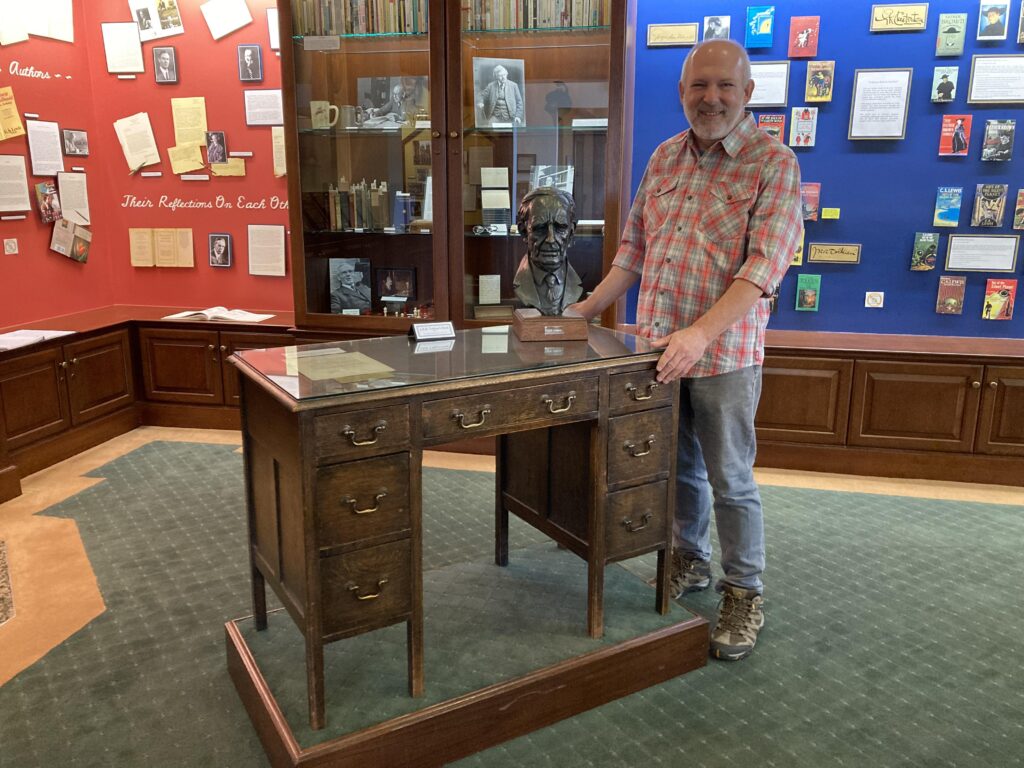
On this desk, Tolkien wrote, typed, and illustrated The Hobbit.
With my own hands, I touched the wood and opened the desk drawers that Tolkien touched and opened. The desk was given to him by his wife in 1927; he sat at it to write The Hobbit in its entirety.
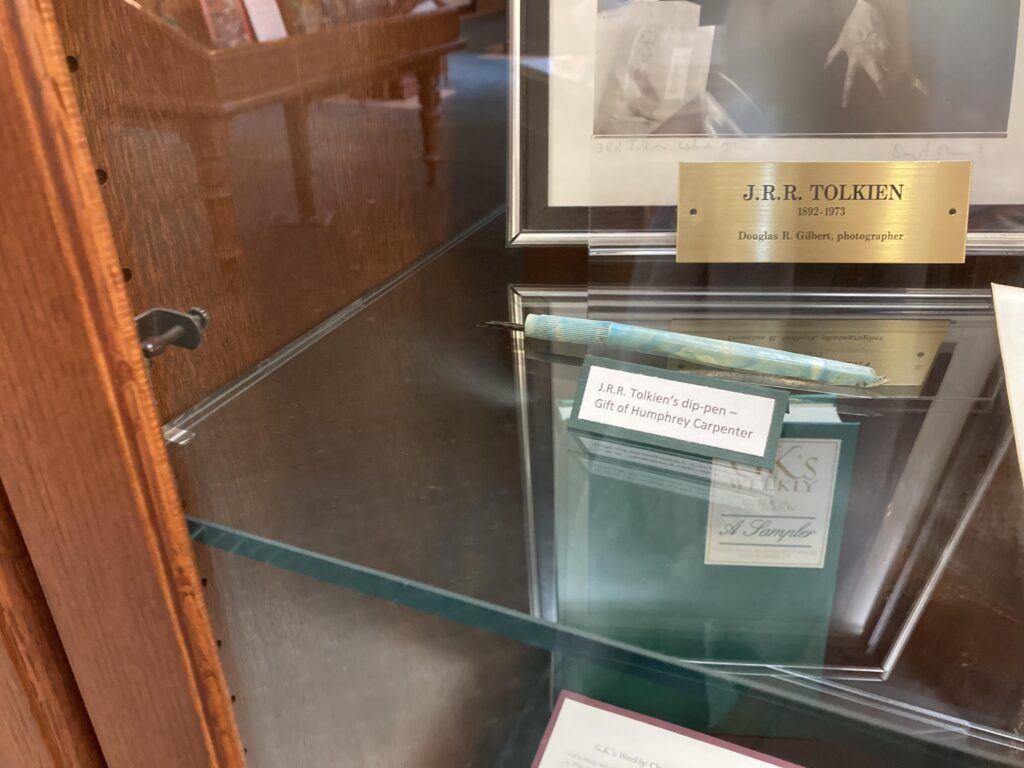
J. R. R. Tolkien’s dip pen.
Tolkien most preferred this dip pen as his writing instrument, favoring it over cartridge pens or a typewriter. A close look reveals that the back end of the pen is charred and melted because of Tolkien’s habit of using it to tap and clean out the pipe he puffed as he wrote.
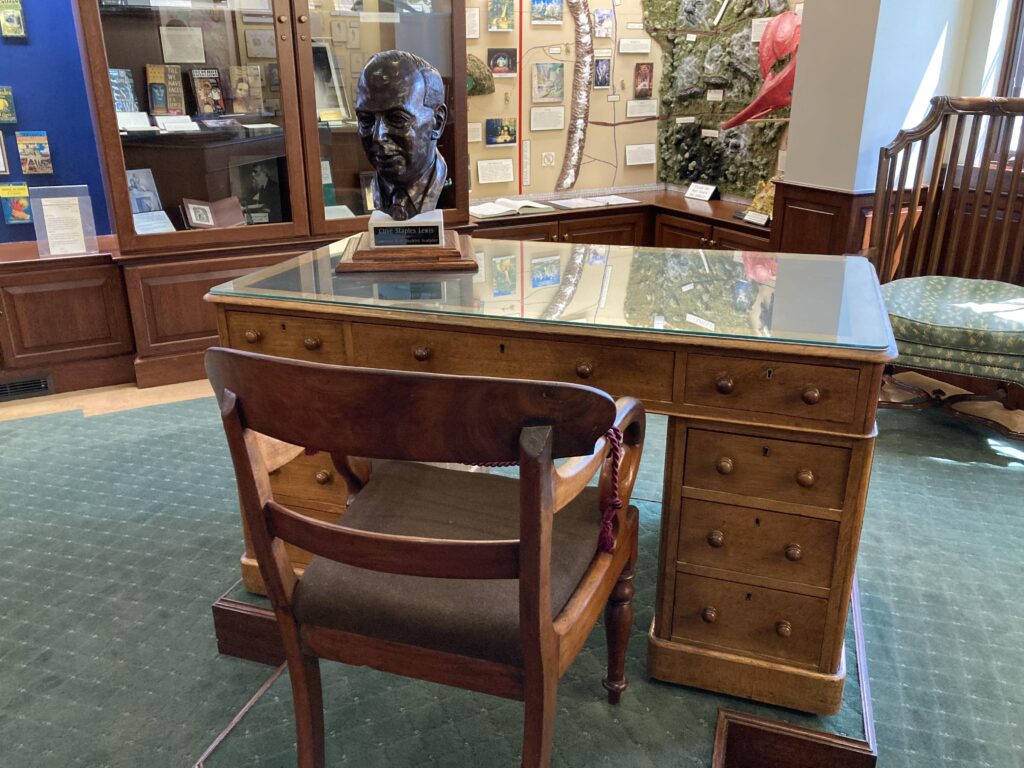
The college desk of C. S. Lewis.
Lewis used this desk and chair in his college office.
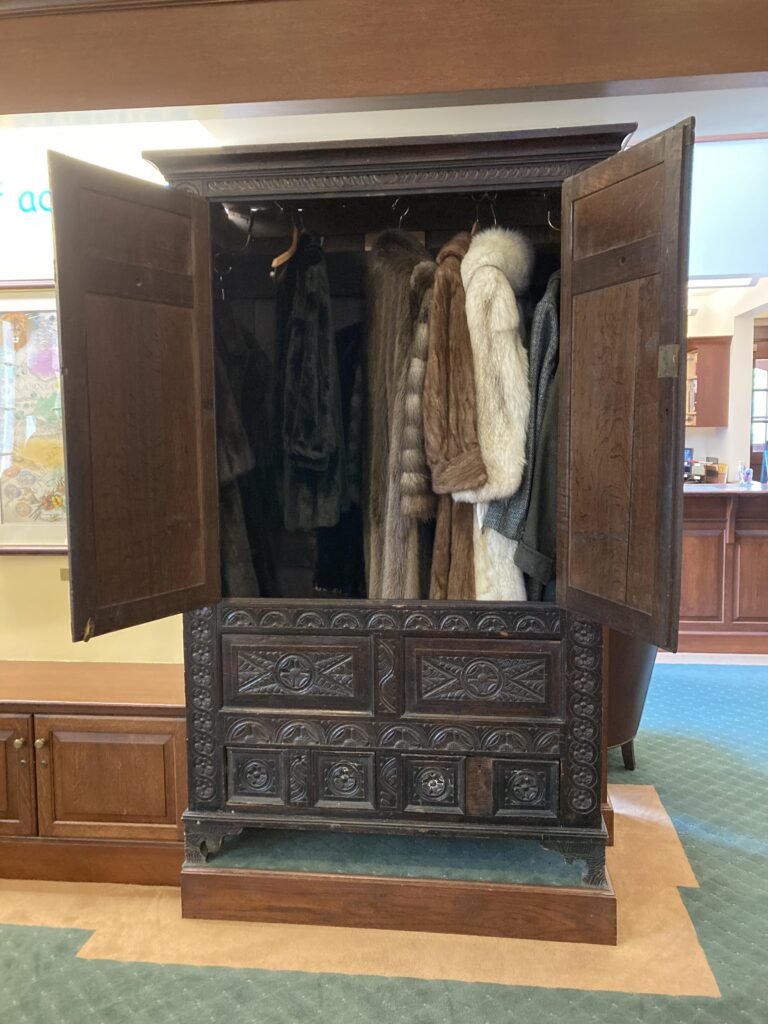
This wardrobe inspired the one that opens into the land of Narnia.
Pictured above is the wardrobe built by Lewis’s grandfather. In the world of Lewis’s fiction, it became the basis for the wondrous wardrobe that opens into Narnia. Most of the coats inside it now are props, but one of the tweeds at the far right belonged to Lewis’s brother.
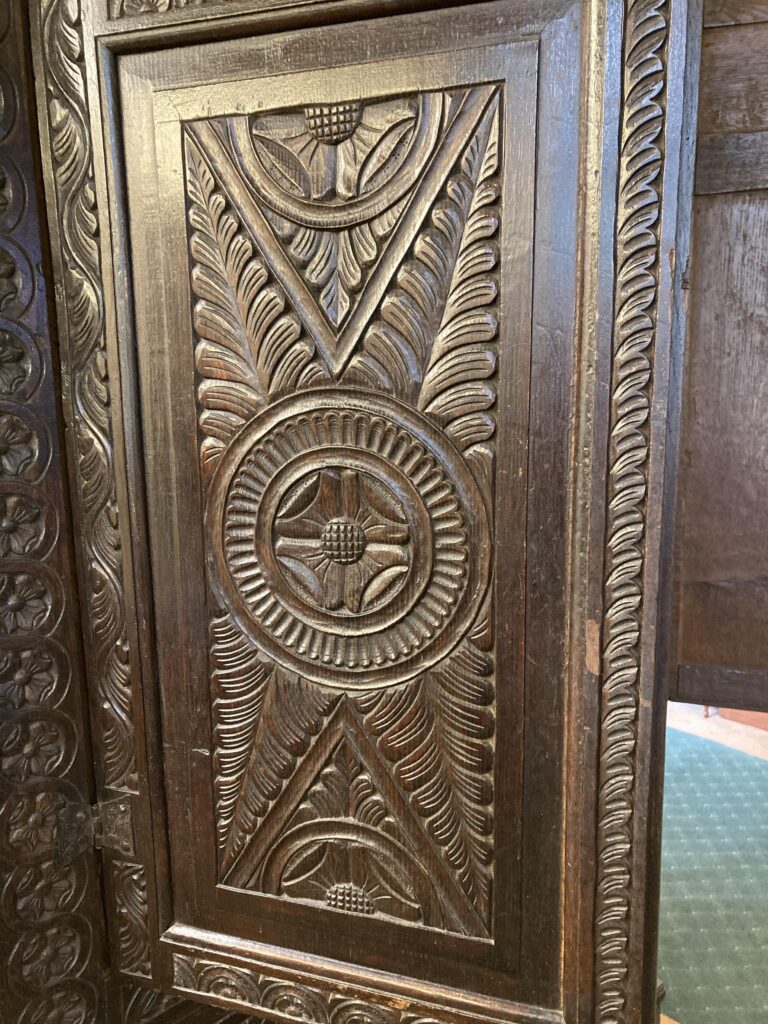
The door of the Narnia wardrobe.
Reaching inside, we stretched out our arms as far as we could . . .
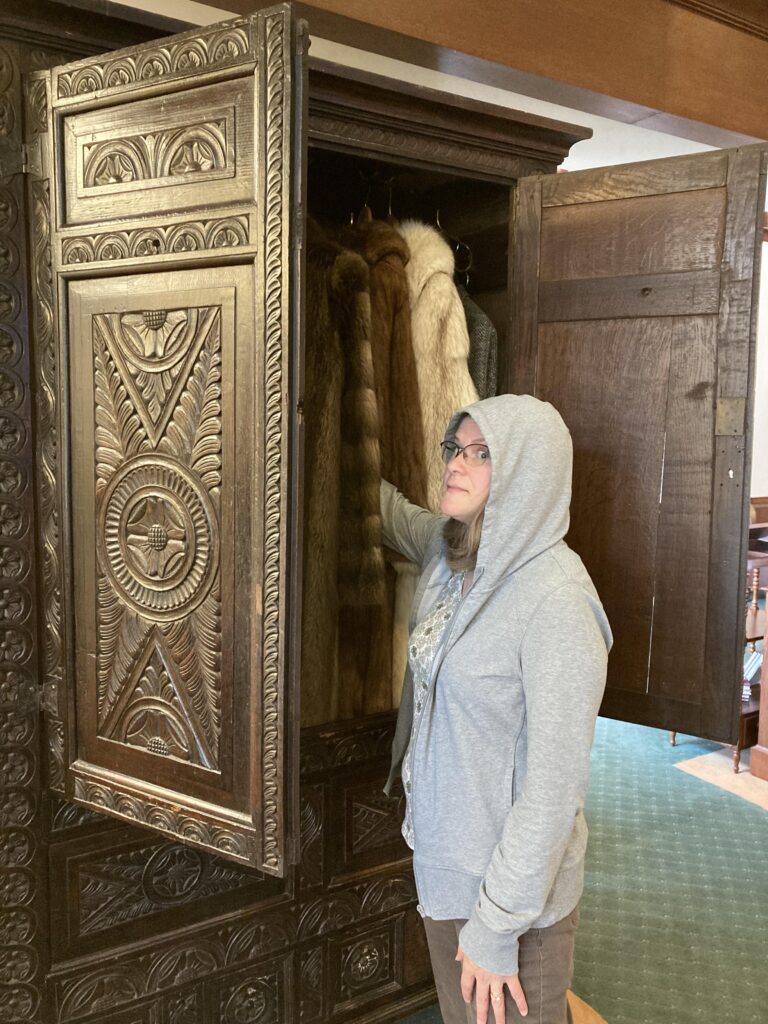
One hand in Narnia.
Perhaps through the complexities of coats rerouting our hands’ paths, we had the curious sense that we were reaching farther than where the wardrobe’s back wall should be. Or maybe, somewhere beyond our fingertips, snow was falling around a glowing lamppost . . .
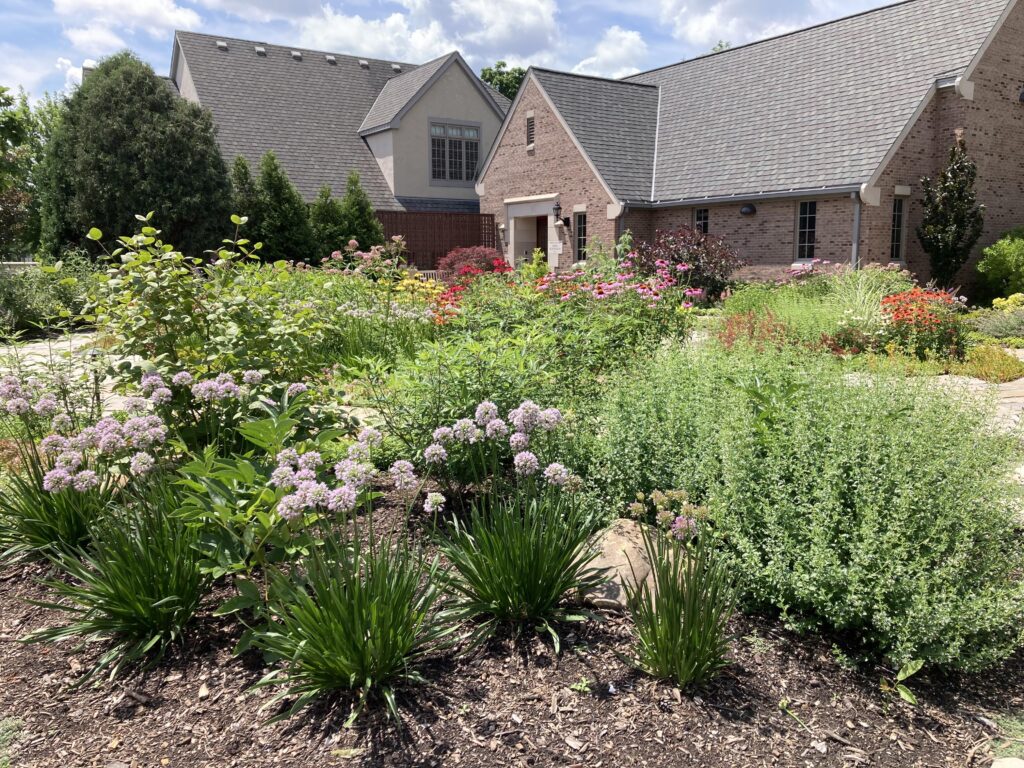
Outside the Wade Center, a lovely garden invites restful contemplation.
Dorothy Sayers’s eyeglasses are there, a trunk that belonged to Charles Williams, and we bought some cards and books at the gift shop. Outside the center, a beautiful garden afforded a chance to sit on a bench and absorb the warmth of a fine July day as we watched the bees busily subcreating, taking pollen from the flowers to be made into honey.
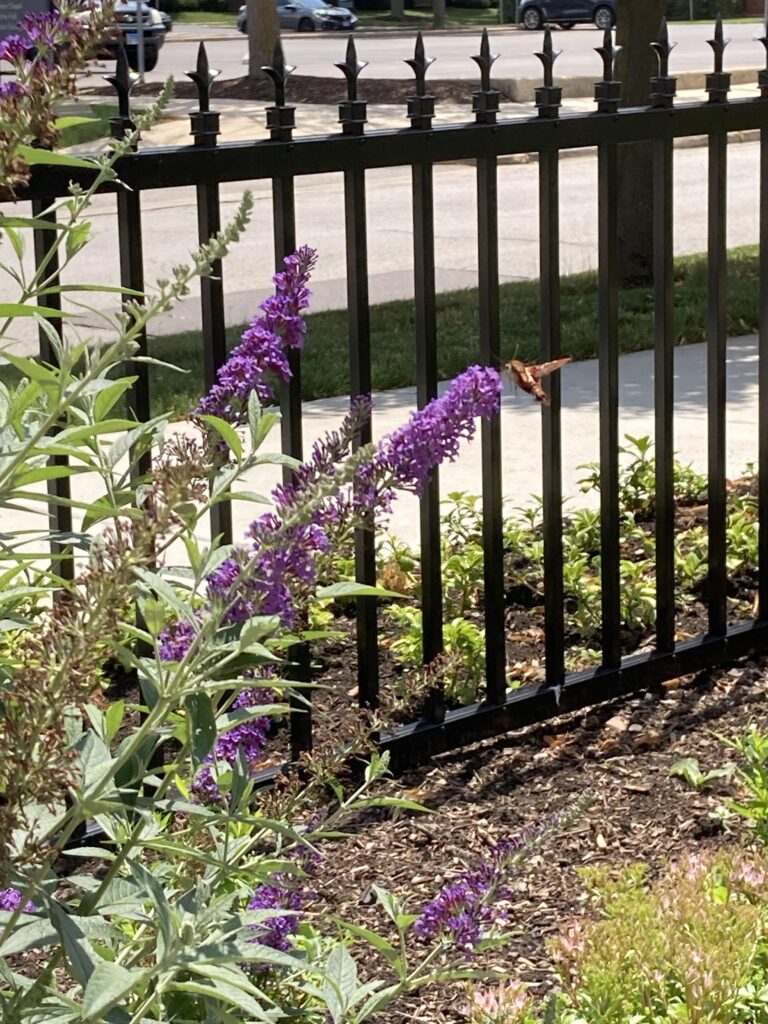
The “archbee.”
Hovering and buzzing among the blossoms was a denizen of the garden that we could not at first identify. “What’s that?” my wife asked, to which I replied, “I think it’s an archbee.” Seeing the photograph later, we concluded that it seems to be a small hummingbird.
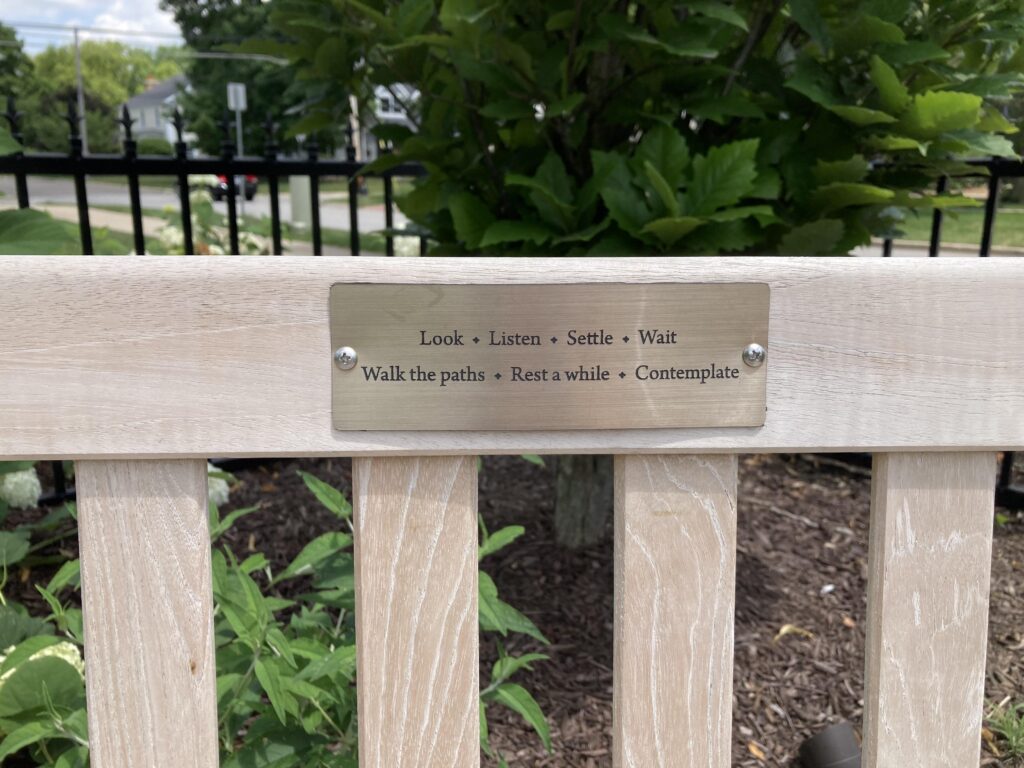
Invitation on the garden bench that reads like a poem.
Lingering in the garden, not wanting to leave, we felt we had made a pilgrimage to the very heart of the humanities. There is goodness, inspiration, and restoration at the Marion E. Wade Center.